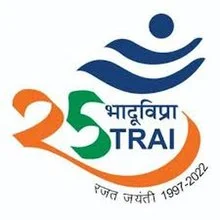TRAI stands for the Telecom Regulatory Authority of India. It is the regulatory body in India responsible for overseeing and regulating the telecommunications and broadcasting sectors.
How TRAI Works?
TRAI works by formulating and implementing regulations and policies to ensure fair competition and the protection of consumer interests in the telecommunications and broadcasting industries. It sets guidelines for tariffs, quality of service, and other aspects of communication services. TRAI also resolves disputes, promotes efficient use of resources, and fosters technological advancements in the sector. The authority plays a crucial role in maintaining a transparent and competitive environment for telecommunications and broadcasting services in India.
Responsibilities of TRAI.
The Telecom Regulatory Authority of India (TRAI) has several key responsibilities, including:
1. **Regulation:** Formulating regulations and guidelines to ensure fair competition and efficient operation of the telecommunications and broadcasting services.
2. **Tariff Setting:** Determining tariffs for different services to prevent anti-competitive pricing and to protect consumer interests.
3. **Quality of Service:** Establishing and enforcing standards for the quality of services provided by telecom and broadcasting operators.
4. **Consumer Protection:** Safeguarding the interests of consumers by addressing their complaints, ensuring transparency, and promoting fair business practices.
5. **Spectrum Management:** Allocating and managing the use of radio frequency spectrum to optimize its utilization among different service providers.
6. **Promoting Competition:** Fostering a competitive environment in the industry to encourage innovation, investment, and the introduction of new technologies.
7. **Dispute Resolution:** Resolving disputes and conflicts among service providers, ensuring a level playing field.
8. **Research and Development:** Encouraging research and development activities in the field of telecommunications and broadcasting.
Overall, TRAI plays a crucial role in creating and maintaining a robust and fair regulatory framework for the telecommunications and broadcasting sectors in India.
Regulation.
TRAI (Telecom Regulatory Authority of India) has implemented various regulations in the telecommunications and broadcasting sectors. Keep in mind that regulatory frameworks can evolve, and there may have been updates or changes since my last update. Some key areas of TRAI regulations include:
1. **Tariff and Interconnection Regulations:** Guidelines for pricing, tariffs, and interconnection arrangements between telecom service providers.
2. **Quality of Service (QoS) Regulations:** Standards and measures to ensure a minimum quality of service for telecom and broadcasting services.
3. **Net Neutrality:** Guidelines to maintain an open and non-discriminatory internet environment, ensuring equal access to all content and services.
4. **Consumer Protection Regulations:** Measures to protect consumer interests, including addressing complaints and ensuring transparency in service offerings.
5. **Spectrum Management:** Allocation and efficient use of radio frequency spectrum, including auctions and licensing.
6. **Broadcasting and Cable Services Regulations:** Policies related to cable television, direct-to-home (DTH) services, and digital broadcasting.
7. **Telemarketing and Unsolicited Commercial Communications:** Regulations to curb unsolicited calls and messages.
8. **Digital Addressable Systems (DAS):** Transitioning to digital broadcasting and addressable systems in cable television.
For the most current and specific information, I recommend checking TRAI's official website or other reliable sources for the latest updates on regulations as of your current date.
Who Governs TRAI?
TRAI, the Telecom Regulatory Authority of India, is an independent regulatory body established by the Government of India. It operates independently of the government and the service providers it regulates. The functioning of TRAI is governed by the TRAI Act of 1997, which outlines its powers, functions, and responsibilities.
While TRAI is an autonomous body, the government appoints the Chairperson and members of TRAI. The appointments are made based on recommendations from a selection committee. The regulatory decisions made by TRAI are expected to be objective, transparent, and in the best interest of consumers and the telecom industry.
Why was TRAI created?
TRAI, the Telecom Regulatory Authority of India, was created in 1997 to address several specific needs in the telecommunications sector:
1. **Deregulation and Market Competition:** The establishment of TRAI was part of the broader process of economic liberalization and deregulation in India. It aimed to introduce competition and break the monopoly in the telecommunications sector.
2. **Consumer Protection:** TRAI was formed to protect the interests of consumers by ensuring the provision of quality services, fair tariffs, and addressing consumer complaints.
3. **Fair Play and Transparency:** It was created to establish a transparent and impartial regulatory authority that could ensure fair business practices among telecom service providers.
4. **Spectrum Management:** With the increasing demand for spectrum, TRAI was tasked with managing the allocation and utilization of the radio frequency spectrum efficiently.
5. **Promoting Technological Advancements:** TRAI plays a role in fostering research and development in the telecommunications sector, promoting technological innovations, and ensuring the industry keeps pace with advancements.
6. **Addressing Disputes:** The authority was given the responsibility to resolve disputes among telecom operators and create a conducive environment for healthy competition.
In summary, TRAI was created to regulate and promote the orderly growth of the telecommunications industry in India, safeguard consumer interests, and ensure fair competition among service providers.

